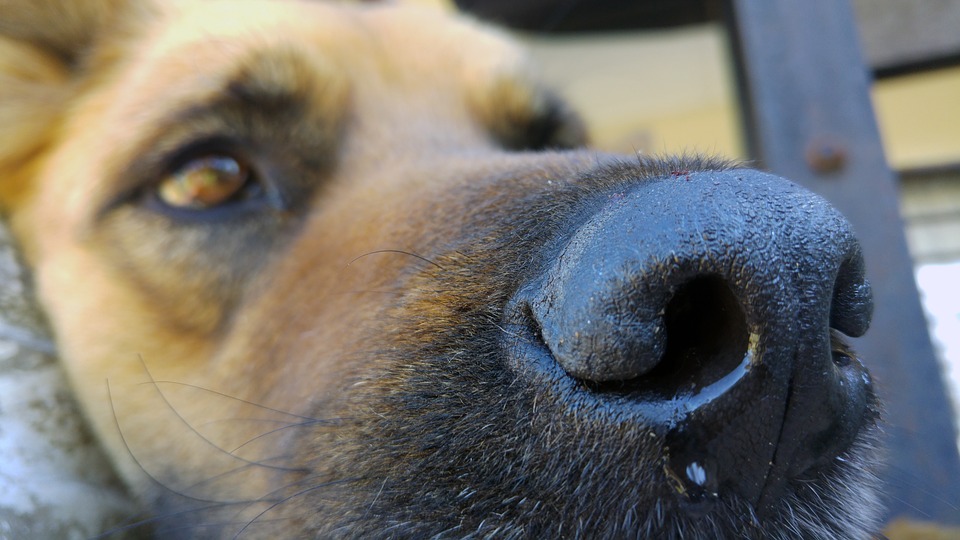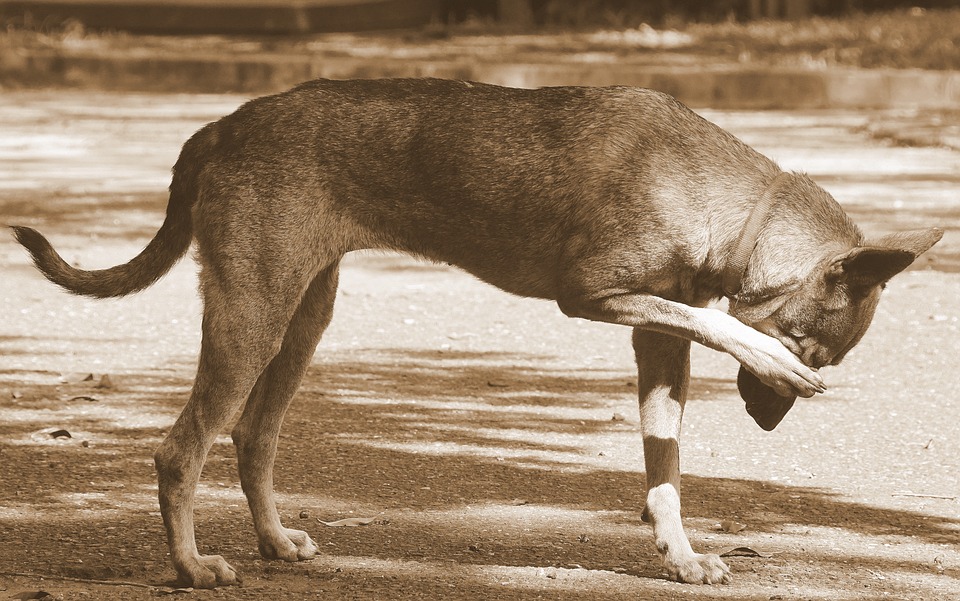Dog diseases, more specifically are the diseases which your dog can get more quickly than you can know about their existence. Your dog is susceptible to a plethora of dog diseases which are caused by dog viruses, airborne bacteria, and whatnt.
Many of such dog diseases are fatal in nature, hence there is an extra need to take precautions against such extreme dog conditions. He/she can catch these dog diseases from anything and anywhere be it parks, shelter, other dogs, the list goes on.
It’s imperative to know what sort of thing your dog is interacting with to protect him from any such infectious dog diseases. If you want to increase the lifetime which you and your four-legged companion will be sharing, you have to look closer into these dog diseases.
You have to make regular visits to your vet, have knowledge of the prevalent dog diseases to keep your dog in a healthy state. Any signs of abnormal dog behavior from your dog and you should have a proactive approach in dealing with any upcoming dog disease.
Here we are mentioning 10 dog diseases that are most common in the present day and age. These dog diseases affect the pups of all ages and breed, need special attention otherwise they can prove fatal to your dog.
Knowing about them is the first step to fight them. For everything about dog diseases, keep scrolling!
1. Rabies

Symptoms
- Burning feeling at the bite wound.
- Pain
- Tingling
- Fever
Note: You shouldn’t wait to check the symptoms as this disease becomes almost fatal after the appearance of the symptoms.
Causes
Rabies virus is the main cause behind Rabies disease.
Usually, all mammals except smaller ones like rodents can spread this virus.
Such dog diseases spread through the saliva of an infected animal by the medium of broken skin or a mucous membrane like eyes or mouth.
Whatever causes the transmission of saliva, be it a bite from the infected animal or saliva transmission by licking is the main cause of Rabies.
Treatment
If you got bit, or an open wound licked by an infected animal then immediately wash that area.
The washing should be done for around 10-15 minutes with soapy water, detergent to reduce the infection.
This should be followed with the correct rabies shots immediately under medical supervision to prevent the spread of the virus.
2. Dog Distemper

Symptoms
- Water discharge from eye, nose.
- Seizure, fit, and cases of hysteria.
- Heavy fever and regular coughing.
- Redness in the eye.
Causes
Dogs that are not vaccinated from the start are at a higher risk of contracting dog distemper later in life.
Infection in respiratory or gastrointestinal systems due to the presence of bacteria is also a major cause of developing such dog diseases.
By coming in any kind of contact with an infected dog can lead to the occurrence of dog distemper in your dog.
Treatment
There is a lack of available medical treatment for dog distemper.
There is an absence of anti-viral drugs in the case of distemper.
The main treatment is reducing the effects of symptoms like the use of fluids if there’s dog diarrhea or, like regularly cleaning the dog nasal area if there’s a continuous discharge of fluids in that region.
Dogisworld Advice: Keep a watch on your pup’s behavior. It’ll tell you a lot about his health and if he’s suffering from a disease or not.
3. Kennel Cough

Symptoms
- Loss of diet and less energy all the time.
- A running nose and feverish body.
- Repetitive sneezing.
- A strong cough with a ‘Bursting’ sound.
Note: The above symptoms could be also for more serious dog diseases like dog distemper or even a heart condition. Hence, you should make a visit to the vet.
Causes
The most common cause of Kennel Cough is interacting with similar infected dogs at common places.
Hence, the dogs with regular visits to dog daycare, dog training, and dog parks have a higher tendency to develop this disease.
Treatment
Usually, a simple Kennel Cough goes with a week or two of rest in most infected dogs.
However, visiting your vet would be advisable to make sure there aren’t any more complex issues arising out of the coughing.
There’s also the presence of a Kennel cough vaccine in the market which can act as a prevention for kennel cough.
4. Dog Cancer

Symptoms
- The signs of dog cancer are pretty similar to those that occur in humans.
- Presence of a lump or some kind of a bump in any body part.
- Wounds from any injury are resulting in abnormal bleeding and it’s not getting healed by itself.
- There’s swelling in the body with sudden lethargy in energy levels.
Note: Sometimes, signs of dog cancer are not clearly visible from outside. You should consult your vet if there’s some repeated abnormal dog behavior.
Causes
Dog cancer is commonly acquired genetically from previous generations of the family.
The inbred population of mixed breeds like that of golden retrievers is more prone to dog cancer because of their large gene pool from previously mixed breeds.
With advances in dog healthcare, the dogs are also living more which is leading to more cases of dog cancer around the world.
Treatment
For dog cancer, the important thing is finding out the condition before it’s too late.
Dog surgery and Dog chemotherapy are still the most common way of treatment of dog cancer.
Some common precautionary measures for such dog diseases include dog spaying before the first heat, and maintaining oral hygiene against dog oral cancer.
Dogisworld advice: Dog vaccination is the best way of prevention from dog diseases. Get your dog vaccinated to prevent some of the most fatal dog diseases.
5. Dog Diabetes

Symptoms
Note: Like dog cancer, Diabetes in dogs also show similar symptoms like those in humans.
1. Perennial thirst, Excessive urination, and sudden weight loss are the classic initial signs of dog diabetes.
2. Cataract dog blindness can also be a sign that your dog is a diabetic one.
3. Diagnosis by checking dog’s blood sugar will quickly tell if he’s a diabetic one or not.
4. Mostly, dog diabetes is normal but if accompanied by vomiting, dizziness then it should be taken as a serious condition.
Causes
Most cases of dog diabetes are due to pancreatic conditions caused by auto-immune disorders.
Such dog diseases are developed genetically or by other environmental factors. Inflammation of the pancreas is also a major factor for developing these disorders.
Some daily habits such as less physical activity also contribute to developing insulin resistance in the body.
Treatment
With proper care, the life expectancy of a diabetic dog will be same as a normal dog.
Consult your vet about which dog insulin to give to your dog as there’s a whole plethora of them in the market and there’s a need for expert supervision.
A diet that contains fewer carbohydrates, more fibers, high proteins coupled with weight loss goes a long way in fighting dog diabetes in the long run.
6. Lyme Disease In Dogs

Symptoms
- Difficulty in breathing and walking.
- Feverish body with a lack of appetite.
- Depression behavior.
- Some of the rare symptoms are heart or nervous system condition.
Causes
“Borrelia Burgdorferi” is the bacterium behind the cause of Lyme disease in dogs.
Small blood-sucking insects known as ‘Ticks’ are the main carriers of Lyme disease in dogs.
When a tick gets attached to the body of a dog for at least 48 hours, its bite leads to the development of this disease.
Treatment
The treatment of Lyme disease in dogs can be done by using suitable antibiotics under a vet’s supervision.
The duration of Lyme disease treatment is usually 4-5 weeks without any bigger life-threatening complications.
In dogs, its extreme necessity to find this medical condition as it has the potential to develop into fatal dog diseases.
Dogisworld Advice: Pet life insurance can prove to be very beneficial for your dog’s treatment. The cost of treating your dog could prove to be very hard on your wallet.
7. Giardiasis In Dogs

Symptoms
- Sudden Weight loss.
- In some cases, Vomiting might occur.
- Fat stools that may contain blood.
Note: The symptoms of Giardiasis may not be visible in all dogs so you need to be diligent in noticing abnormal dog behaviors in your dog.
Causes
Giardiasis occurs in dogs due to swallowing of the parasite at its cyst stage.
This swallowing leads to infection and damage in the intestinal region.
The infection can later from the infected dog to others by the medium of indisposed stools, and contaminated water.
Treatment
For an infected dog, A medical treatment for Giardiasis is necessary under a vet’s supervision.
In case of such dog diseases, with the ongoing treatment, you should provide a high-digestible diet to your dog.
Remember, Giardiasis can also spread to humans as diarrhea for which proper personal hygiene and disinfection is required.
8. Kidney Failure In Dogs

Symptoms
- Change in volume of urine and or, presence of blood in the urine.
- Less water consumption and or, lethargy.
- Reduction in food intake and or, sudden weight loss.
- Bad mouth odor and or, vomiting.
Causes
Ingesting dog toxins such as antifreeze, some drug can lead to acute kidney failure in dogs.
Another reason could be a reduction in the flow of oxygen or blood to the kidneys causing improper functioning of the kidneys.
There are many other causes for kidney failure in dogs but as the condition takes time to show its signs, they are harder to determine.
Treatment
A major precautionary measure you can adopt is not allowing your dog to eat anything that could be potentially hazardous to him.
There are various methods of treatment against kidney failure in dogs which includes giving specific drugs, dialysis under medical supervision.
A dog kidney failure could turn into fatal dog diseases.
Therefore, early detection and cure are necessary for the dog.
Dogisworld Facts: Dogs spread diseases between themselves. Keep your pup away from interacting with any fellow dog which seems sick to you.
9. Para-Influenza In Dogs

Symptoms
- Heavy coughing with the presence of phlegm in the cough.
- Feverish body.
- Discharge of water from the nasal area.
- Repeated harsh sneezing.
Note: In some cases, there could also be the condition of dog pneumonia.
Causes
Canine Parainfluenza is caused by Canine Parainfluenza virus (CPIV) which spreads through air medium in dogs.
The usual places of the spread of such dog diseases are at common places such as dog daycare and dog parks.
Treatment
Firstly, CPV dogs shouldn’t be allowed to be around normal dogs.
The medication under a vet’s supervision is the next necessary step as without treatment, it can lead to more serious dog diseases.
Some other common treatments include a steam bath and a light hot shower to ease the discomfort caused by the disease.
10. Canine Parvovirus

Symptoms
- Diarrhea.
- Lack Of Appetite and Weight Loss.
- Vomiting.
Causes
The main cause of Canine parvovirus disease is the alteration in the already present gene in the DNA of a dog.
The method by which spreads is either by direct contact or through consumption of feces of an infected dog.
Common dog places are the major hotspot for the spread of such kind of dog diseases, particularly dog shelters, and dog daycare centers.
Treatment
By adopting correct protocols for vaccination from the puppy stage, You can prevent your dog from getting CPV in the future.
Since CPV is an incurable dog disease, the treatment includes minimizing secondary infections preferably in a hospital environment.
A Vet’s supervision is of utmost importance here as secondary causes like dog dehydration or blood infection can even lead to death.
Dogisworld Advice: Regular check-ups and keeping your four-legged companion active is the way to keep your dog healthy for a long time.
This was all about dog diseases from our corner.
Wait! We would really love to hear back from you in the comment section.
Do tell us if you noticed any these symptoms in your four-legged companion and tried getting in touch with a vet.
Or, do you want any other medical conditions to include in our next article regarding dog diseases?
As always you can reach to us in the comment section for anything and everything related to dogs.
Happy Petting To You Guys!













[…] Common Diseases and Health […]
[…] is a very serious state in dogs. It can even lead to death. A dog who has suffered a stroke of heat will pant rigorously, will […]
[…] Can dogs eat dried figs? Giving your pooch dried figs in place of fresh figs is injurious as dried ones contain a higher percentage of sugar content in them. Not only this, but they also have lower water levels in them. These factors are the deciding ones for your dog’s bad health. […]